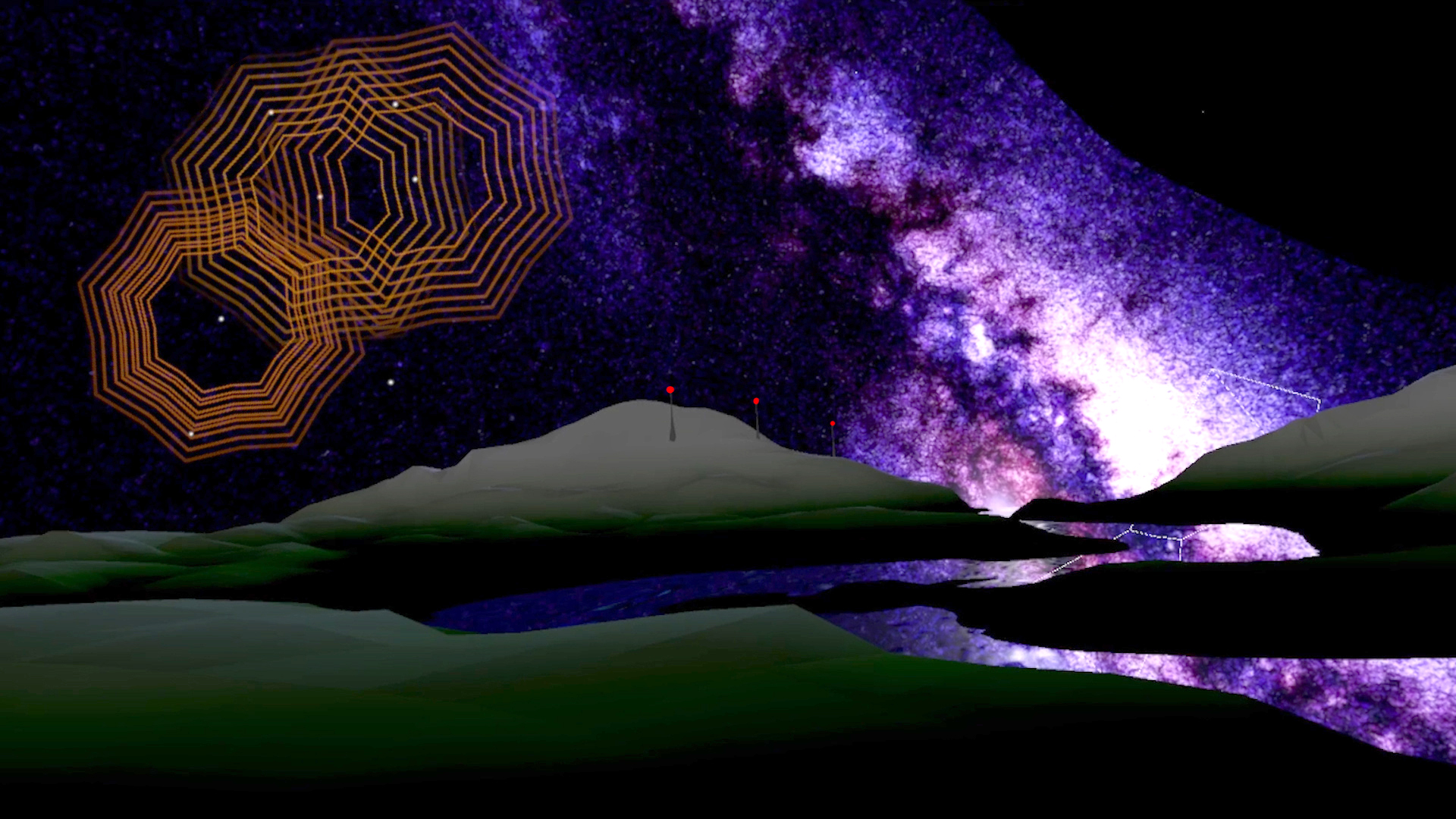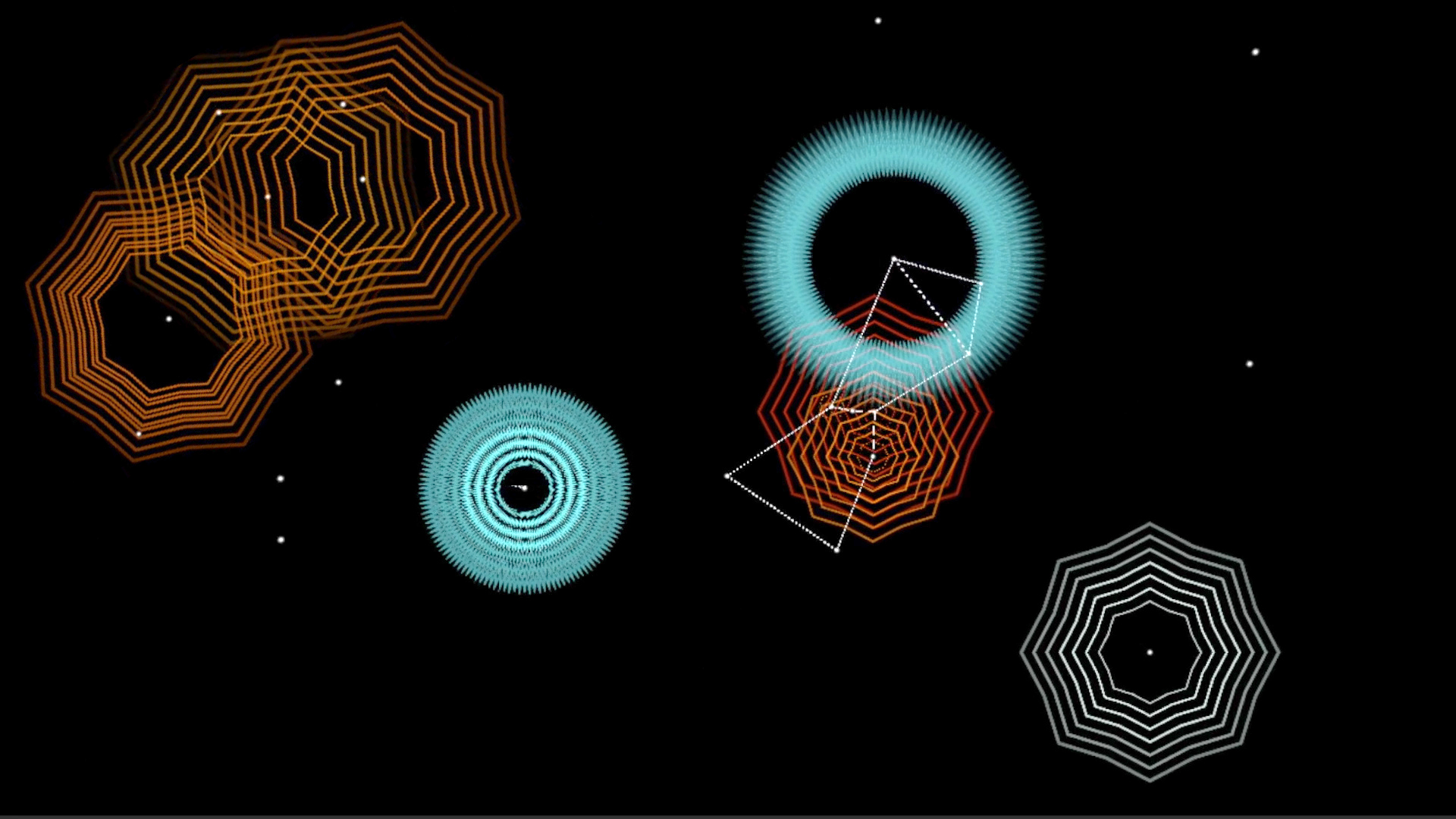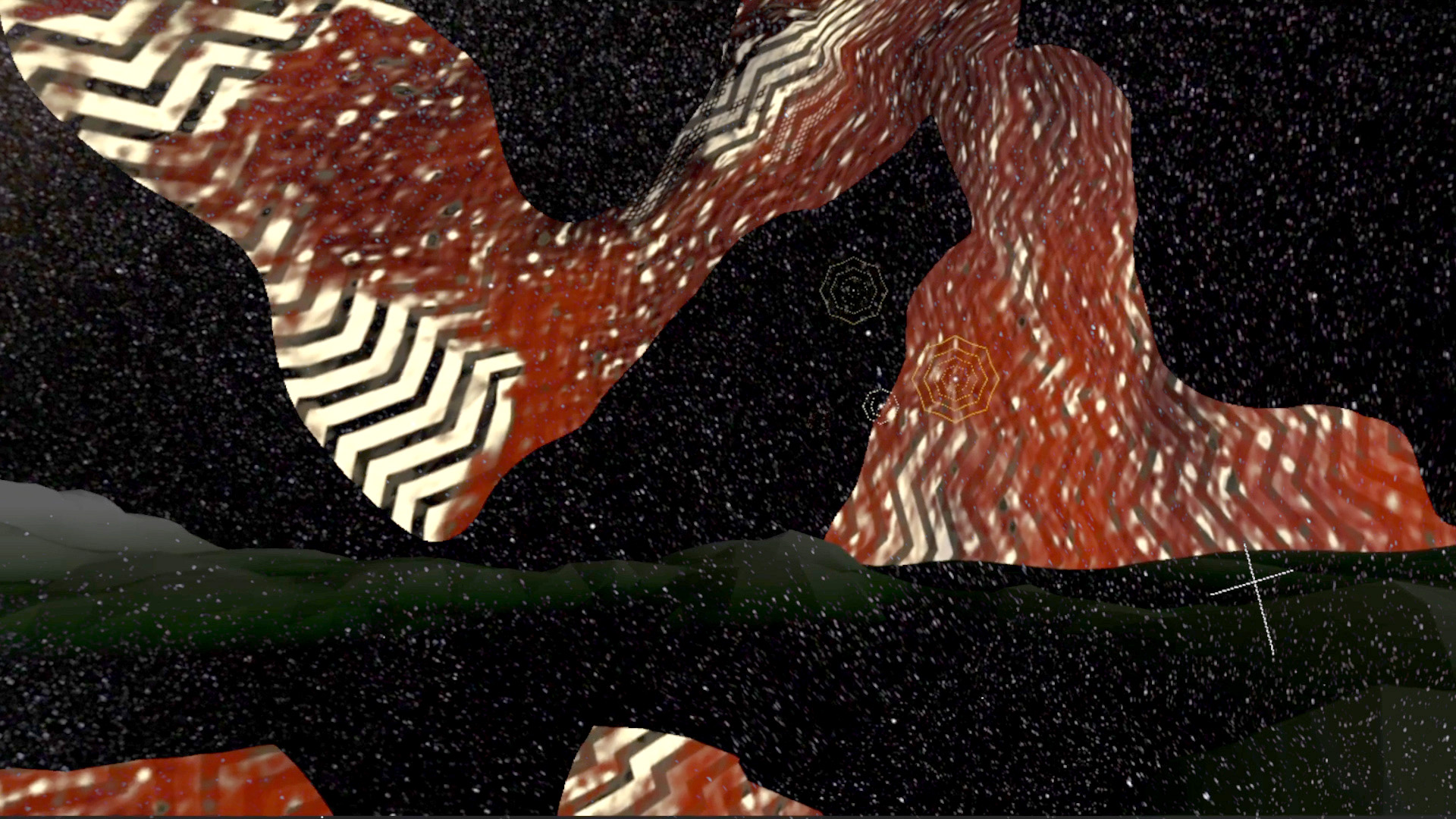Sound Planetarium
Date
2023
Project Type
Interactive Virtual RealitySound Planetarium: 100 Brightest Stars
How can we use virtual environments to explore physical realities that our bodies cannot sense or perceive? The Sound Planetarium team has developed a virtual reality model of the hundred brightest stars as seen from Earth, exploring how individual stars and stellar constellations can be rendered and interacted with through visual and sonic abstraction. As a science communication tool, an artistic experience, and an alternative to traditional astronomy pedagogy, Sound Planetarium allows us to somatically experience stellar properties rendered in sound and light, all controlled by the user via gaze-activation. Our virtual environment also allows users to activate the disk of the Milky Way, simulate the motion of rapidly rotating or orbiting planets, and view the sky at wavelengths beyond human vision. Our virtual environment also recontextualizes the impact of human light pollution as sound pollution, reframing the loss of dark skies as multisensory awareness.
The Sound Planetarium project is an interdisciplinary collaboration exploring the synthesis of art and astronomical science in visualization, conceptualization, and education across sense modalities. Learn more at http://www.soundplanetarium.org.
- Adam Burgasser, Department of Astronomy & Astrophysics, University of California, San Diego
- Tara Knight, Department of Critical Media Practices, University of Colorado, Boulder
- Kevin Sweet, Department of Design & Interactive Arts, University of Texas, Dallas
- Justin Trupiano, Department of Critical Media Practices, University of Colorado, Boulder
- Roberto Azaretto, Department of Critical Media Practices, University of Colorado, Boulder
Please contact directly for preview access to the VR experience or a 2D screen capture video version.



